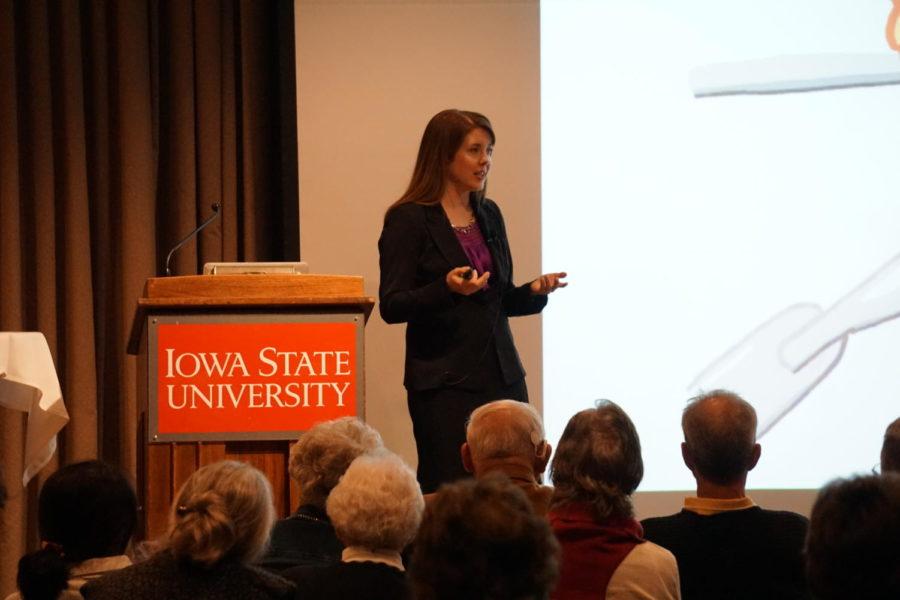Iowa State assistant chemistry professor discusses cancer evolution and single-cell analysis
Megan Petzold/Iowa State Daily
Iowa State Assistant Professor of Chemistry Robbyn Anand speaks about curing cancer one cell at a time during the fall Deans Lecture Series October 11.
October 11, 2018
Robbyn Anand, Iowa State assistant professor of chemistry, spoke about single-cell analysis and expanding the understanding of cancer evolution and relapse in her lecture:“Divide and Conquer: Stopping Cancer One Cell at a Time” on Thursday night at the Memorial Union.
New technologies are now being used to distinguish minor differences between cancer cells in patients, which gives doctors a way to decide which treatment or combined treatments are best at getting rid of the cancer.
Unfortunately, this type of single-cell analysis comes at a high price that makes this personalized treatment virtually inaccessible to use. Anand’s lab is making this more widely available by inventing a chip that does three things at once.
Historically, cancer used to be categorized by location, but since cancer cells have similar mutations, it is now being categorized by the mutations in individualized locations.
“Forty percent of Americans are diagnosed with some form of cancer at some point in time in their lives,” said Anand. “Only two thirds of patients are able to survive more than five years after their initial diagnosis, the goal of our group is to push that number closer to 100%.”
The first thing Anand did was combine the identification and isolation of individual cells into one step.
“The way we discriminate cancer cells from healthy cells is by testing their ability to electrically polarize when they are placed in an electric field,” Anand said.
A cell becomes polarized when one end of the cell is negatively charged and the other end of the cell is positively charged. To determine which cells are healthy and which are not, scientists look at the polarization response of the cells that are dependent on the frequency of the electric field.
All cell types are repelled at low frequencies, but as frequency increases, cell types cross over to being attracted. Cancer cells cross over sooner than healthy blood cells do. There’s a frequency at which healthy cells are repelled and cancer cells are attracted, and that is how they determine which are cancer cells.
Cells are tested by being isolated individually in chambers with the needed chemicals to analyze the genes to look for cancer mutations. They then break the cells open to see the genetic material inside.
“Our goal is to have some sort of a signal that would tell us whether a mutation is there or not,” Anand said.
A probe molecule matches the mutation and is cut by an enzyme to release a fluorescent label that turns it on, and a chamber that had a mutation cell in it will be detected by fluorescent light.
The second chip that Anand created identifies, isolates and tests the call all in one.
First, they put in the cell sample and use the electric field to capture the cancer cells in electrode tips and turn off the capture voltage after all other healthy cells flow through.This identifies and isolates the cell at the same time.
While the cell is being held in place, they introduce the chemicals they use for the test and add ionic liquid that allows an electrical pulse to break the cells open.
The chip is made in Iowa State’s chemistry department’s clean room and students do the final alignment step.
















